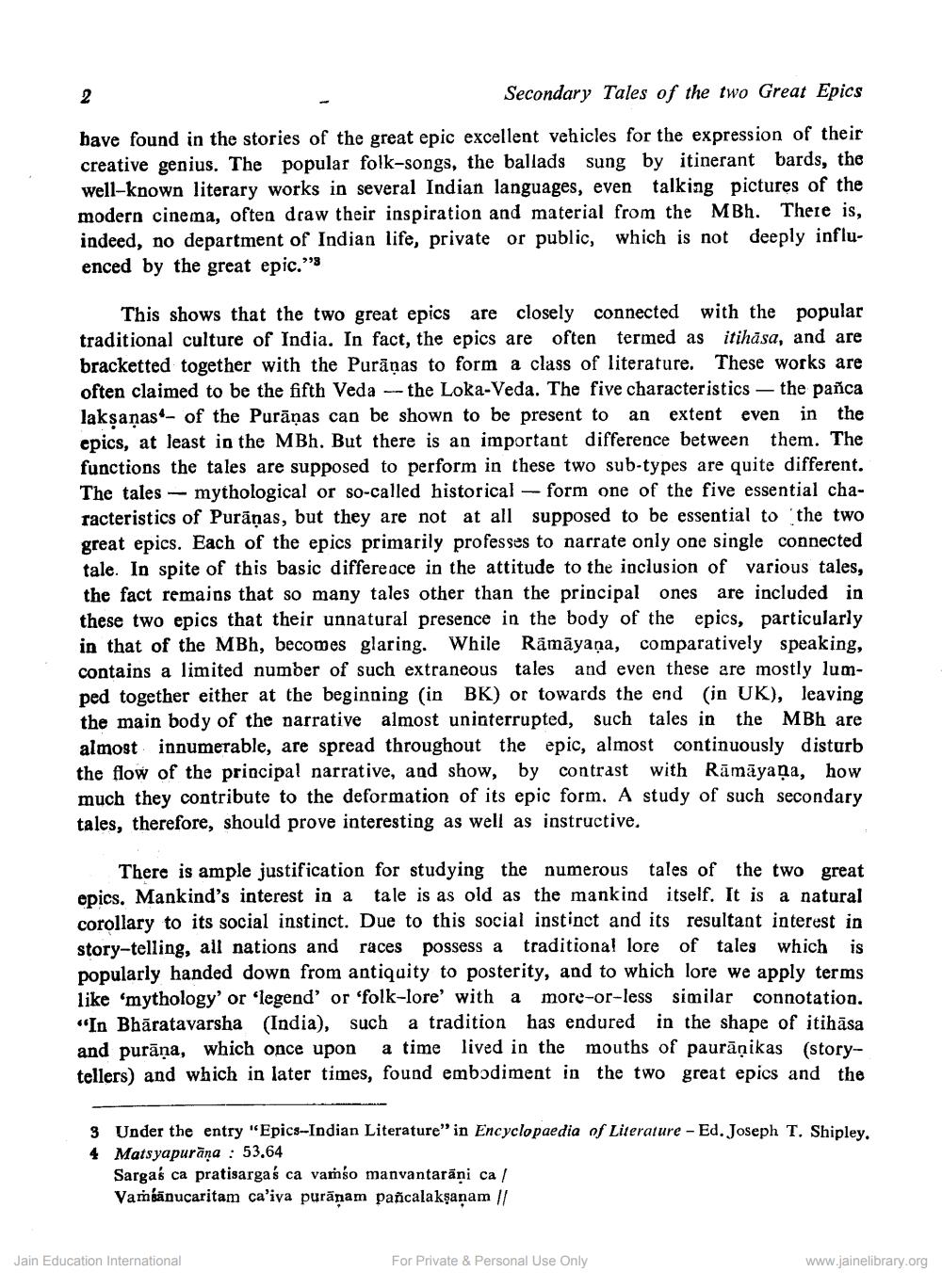________________
Secondary Tales of the two Great Epics
have found in the stories of the great epic excellent vehicles for the expression of their creative genius. The popular folk-songs, the ballads sung by itinerant bards, the well-known literary works in several Indian languages, even talking pictures of the modern cinema, often draw their inspiration and material from the MBh. There is, indeed, no department of Indian life, private or public, which is not deeply influenced by the great epic.”
This shows that the two great epics are closely connected with the popular traditional culture of India. In fact, the epics are often termed as itihasa, and are bracketted together with the Purāṇas to form a class of literature. These works are often claimed to be the fifth Veda -- the Loka-Veda. The five characteristics - the pañca laksaņas- of the Purānas can be shown to be present to an extent even in the epics, at least in the MBh. But there is an important difference between them. The functions the tales are supposed to perform in these two sub-types are quite different. The tales - mythological or so-called historical - form one of the five essential characteristics of Purāņas, but they are not at all supposed to be essential to the two great epics. Each of the epics primarily professes to narrate only one single connected tale. In spite of this basic differeace in the attitude to the inclusion of various tales, the fact remains that so many tales other than the principal ones are included in these two epics that their unnatural presence in the body of the epics, particularly in that of the MBh, becomes glaring. While Rāmāyaṇa, comparatively speaking, contains a limited number of such extraneous tales and even these are mostly lumped together either at the beginning in BK) or towards the end (in UK), leaving the main body of the narrative almost uninterrupted, such tales in the MBh are almost innumerable, are spread throughout the epic, almost continuously disturb the flow of the principal narrative, and show, by contrast with Rāmāyaṇa, how much they contribute to the deformation of its epic form. A study of such secondary tales, therefore, should prove interesting as well as instructive.
There is ample justification for studying the numerous tales of the two great epics. Mankind's interest in a tale is as old as the mankind itself. It is a natural corollary to its social instinct. Due to this social instinct and its resultant interest in story-telling, all nations and races possess a traditional lore of tales which is popularly handed down from antiquity to posterity, and to which lore we apply terms like 'mythology' or 'legend' or 'folk-lore' with a more-or-less similar connotation. "In Bhāratavarsha (India), such a tradition has endured in the shape of itihāsa and purāņa, which once upon a time lived in the mouths of paurāņikas (storytellers) and which in later times, found embodiment in the two great epics and the
3 Under the entry "Epics-Indian Literature" in Encyclopaedia of Literature - Ed. Joseph T. Shipley. 4 Matsyapurāna : 53.64
Sargaś ca pratisargaś ca vamso manvantaräni ca/ Vamsānucaritam caliva puranam pañcalaksanam //
Jain Education International
For Private & Personal Use Only
www.jainelibrary.org




